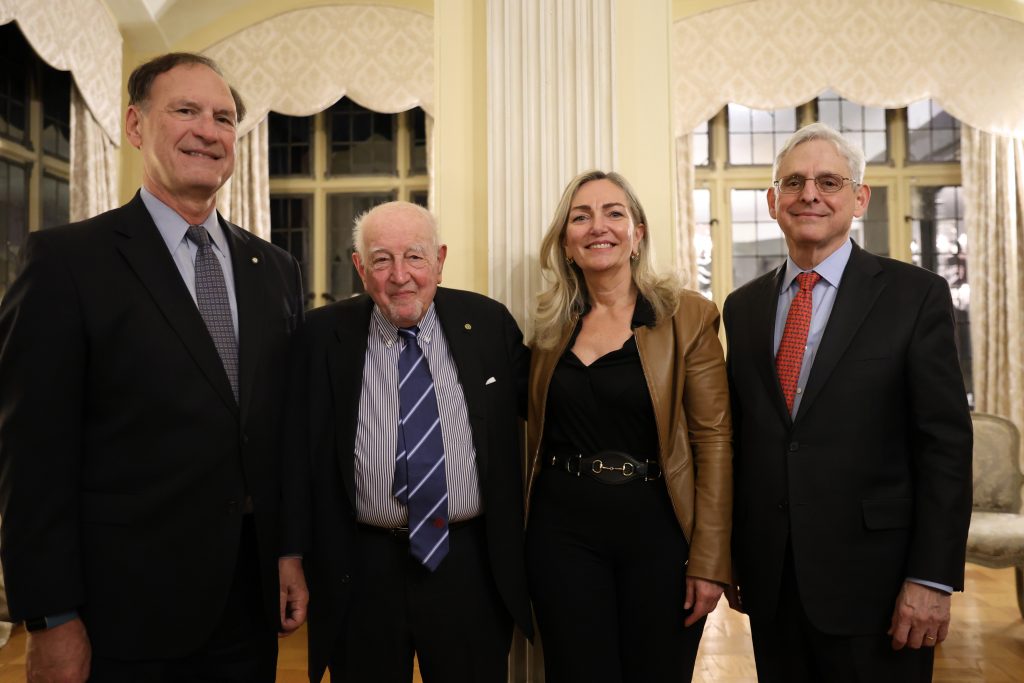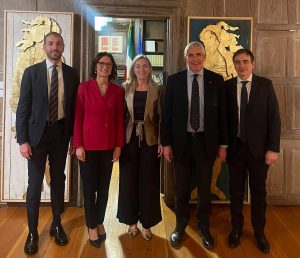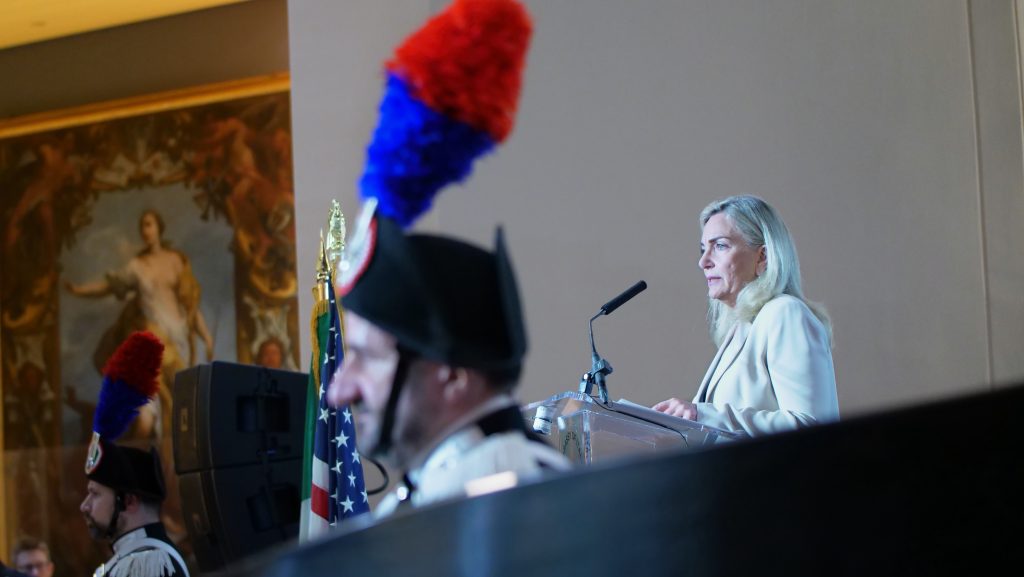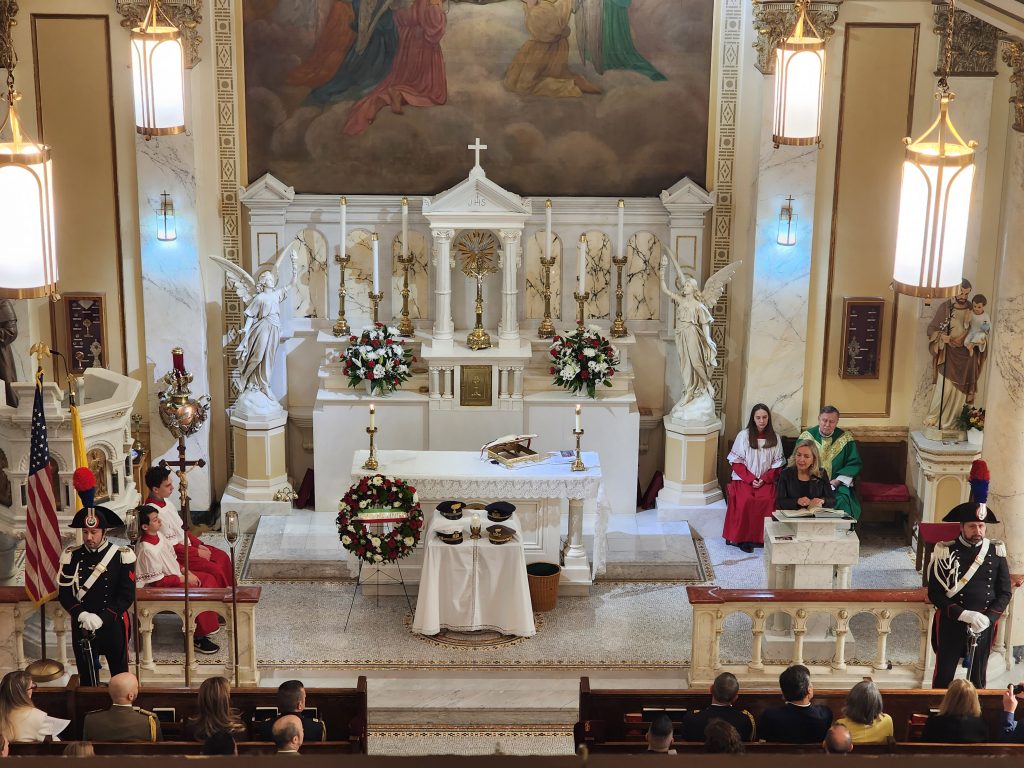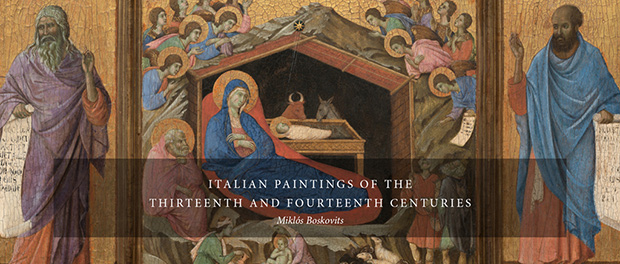
On March 21, 2016, the National Gallery of Art debuted the second release in its Online Editions series, Italian Paintings of the Thirteenth and Fourteenth Centuries by the late Miklós Boskovits, one of the leading scholars of early Italian art. More than a decade in the making, this catalog offers a fresh examination of this collection—which has not been published
 in its entirety since the 1979 Catalogue of the Italian Paintings by Curator of Paintings Emeritus Fern Rusk Shapley. The catalog is made possible through the generous support of the Samuel H. Kress Foundation. Additional funding is provided by The Andrew W. Mellon Foundation through a special endowment for scholarly publications supported by the Getty Foundation.
in its entirety since the 1979 Catalogue of the Italian Paintings by Curator of Paintings Emeritus Fern Rusk Shapley. The catalog is made possible through the generous support of the Samuel H. Kress Foundation. Additional funding is provided by The Andrew W. Mellon Foundation through a special endowment for scholarly publications supported by the Getty Foundation.
NGA Online Editions is part of an ongoing effort to digitize and provide open access to the Gallery’s permanent collection catalogs and will eventually document more than 5,000 paintings, sculptures, and decorative arts with peer-reviewed scholarship. Users can access the web-based, interactive catalog at www.nga.gov/content/ngaweb/research/online-editions.html. The series continues the Gallery’s renowned Systematic Catalog project documenting the permanent collections. Edgar Degas Sculpture (2010) was the most recent printed catalog; Dutch Paintings of the Seventeenth Century, published online in 2014 with expanded entries, was the first Gallery systematic catalog to be digitized.
The National Gallery of Art’s collection of old master Italian paintings is considered the most important in America and among the finest and most comprehensive in the world. This part of the collection holds works by artists who were some of the most influential Italian painters in all of art history, including Giotto, Simone Martini, Lippo Memmi, Paolo Veneziano, Pietro Lorenzetti, and Agnolo Gaddi. Moreover, the Gallery is the only institution in the United States to own two panels from Duccio di Buoninsegna’s monumental masterpiece, the Maestà (1308–1311).
“Producing the definitive catalog of the 13th- and 14th-century Italian paintings in the National Gallery of Art has been a highly complex undertaking that could not have been accomplished without the contributions of many individuals for more than a decade. We are supremely grateful to the late Miklós Boskovits, who
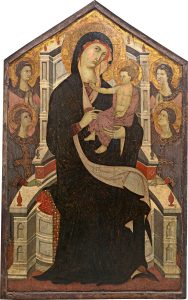
brought a lifetime of expertise to this project, and to Laurence B. Kanter, chief curator and Lionel Goldfrank III curator of European art at the Yale University Art Gallery, who agreed to undertake the role of volume editor after Miklós’s death,” said Earl A. Powell III, director, National Gallery of Art. “We also extend our thanks to the Samuel H. Kress Foundation’s president Max Marmor and its Board for its continuing commitment to the Gallery, and to the Getty Foundation for its critical support in enabling the Gallery to embark on this digital series.”
As Kanter, author of several catalogs on early Italian painting, writes in his introduction, “This catalog represents the fortunate confluence of two interrelated strands: it is an encounter between the most refined and consequential assembly of early Italian paintings in this country, ranking among the greatest collections of such material anywhere outside of Italy, and the most original and influential scholar of this material, Miklós Boskovits, a man who defined many of the canonical presumptions on which the modern study of the period is based.”
Additional online catalog releases on other areas of the Gallery’s collection are in process, among them American Modernism, Italian Paintings of the Sixteenth Century, and French Paintings of the Nineteenth Century.
About the Project
One of the world’s great connoisseurs of this period of Italian painting, Boskovits brought an unparalleled eye and expertise to the project, which resulted in reattributions and date changes for some works in the collection. This catalog is also the first to offer a candid, thorough assessment of the condition of the Gallery’s earliest Italian paintings. The staff of the Gallery’s paintings conservation and scientific research laboratories carried out systematic examinations and documented the results in formal technical reports used by Boskovits as the basis for his remarks in the technical summaries that precede each entry. The technical summaries are an integral part of the entries and aim to inform the reader about the state of preservation of each painting, which affects any effort to determine its attribution or date.
Each entry is conceived as a small monograph and the bibliography provided for each painting includes every significant citation. The paintings in this catalog are generally components of greater assemblages—small works painted for private devotion or fragments from multipaneled altarpieces. An effort has been made to suggest the original context for these works through interactive, schematic reconstructions, which will help users of the catalog understand the panels’ original purpose and meaning. The history of ownership and exhibition history are also given in greater detail than heretofore, thanks in part to information available from the Getty Provenance Index and to archival research.
“This catalog of the Gallery’s 13th- and 14th-century Italian paintings joins others in documenting the collection but in an online edition designed to make it more robust and easier to use,” said David Alan Brown, curator of Italian paintings, National Gallery of Art. “As in previous volumes, the painters included here are some of the greatest names in Western art—Giotto and Duccio, for example. A notable feature of this catalog is the highly informative and helpful reconstructions of the altarpieces and other multipaneled works from which the Gallery’s pictures derive.”
Key Details and Features
NGA Online Editions provides free and open access to featured collections and includes introductions by curators, illustrated scholarly entries, biographies of the artists, technical summaries, a complement of related essays, and rich media—in this case a series of audio tours of Italian paintings by David Alan Brown, curator of Italian paintings, and Julian Gardner, professor emeritus at the University of Warwick. Other important features of the site include:
- A customized reading environment: An adjustable split-screen “reader mode” allows users to view scholarly text alongside images, notes, and comparative figures or to view them in line with the text.
- Compare and explore images: An image-comparison tool enables users to view primary and comparative images side by side or to explore technical images via overlay and cross-fading techniques.
- Ease of research: A toolbar provides preformatted citations for an object or biography, easy export, and quick access to archived pages.
- Archived versions and permanent URLs: Immediate access to PDFs of each entry and to the entire catalog; the assurance of permanent web addresses are a convenience to students and scholars alike.
NGA Online Editions presents the same authoritative, peer-reviewed scholarship found within the Gallery’s bound volumes but enriched with customized tools for a more dynamic research experience.
Press Contact:
Laurie Tylec, (202) 842-6355 or l-tylec@nga.gov
General Information
The National Gallery of Art and its Sculpture Garden are at all times free to the public. They are located on the National Mall between 3rd and 9th Streets at Constitution Avenue NW, and are open Monday through Saturday from 10:00 a.m. to 5:00 p.m. and Sunday from 11:00 a.m. to 6:00 p.m. The Gallery is closed on December 25 and January 1. For information call (202) 737-4215 or visit the Gallery’s Web site at www.nga.gov. Follow the Gallery on Facebook at www.facebook.com/NationalGalleryofArt, Twitter at www.twitter.com/ngadc, and Instagram at http://instagram.com/ngadc.
Visitors will be asked to present all carried items for inspection upon entering. Checkrooms are free of charge and located at each entrance. Luggage and other oversized bags must be presented at the 4th Street entrances to the East or West Building to permit x-ray screening and must be deposited in the checkrooms at those entrances. For the safety of visitors and the works of art, nothing may be carried into the Gallery on a visitor’s back. Any bag or other items that cannot be carried reasonably and safely in some other manner must be left in the checkrooms. Items larger than 17 by 26 inches cannot be accepted by the Gallery or its checkrooms.
Department of Communications
National Gallery of Art
2000B South Club Drive
Landover, MD 20785
phone: (202) 842-6353
e-mail: pressinfo@nga.gov
Subscribe to Our E-mail Newsletters
Stay up to date with the National Gallery of Art by subscribing to our e-mail newsletters: Web, educators, family programs, fellowships/internships, films, lectures, music programs, and teen programs. Select as many updates as you wish to receive. To edit your subscriber information, please go to our subscription management page.
